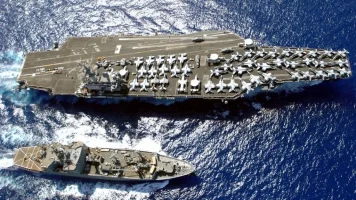- Views: 2K
- Replies: 18

The Indian defence community is voicing a strong call to action on social media, urging the Government of India to prioritize funding for critical defence projects, particularly the Advanced Medium Combat Aircraft (AMCA) program.
This surge in online activism comes in the wake of China's recent revelation of its 6th generation fighter jets, highlighting a widening gap in aerial capabilities between the two nations.
The AMCA, India's ambitious 5th generation fighter jet project, has the potential to significantly bolster the nation's air power. However, the program has faced delays, with funding constraints cited as a major bottleneck.
The defence community argues that with China rapidly advancing its aerial warfare capabilities, India must keep pace to maintain regional security and sovereignty. The development of both 5th and 6th generation fighter technologies is seen as crucial to countering China's aggressive military modernization.
Online discussions are criticizing the allocation of taxpayer money towards what they perceive as "freebies" – welfare schemes and subsidies – while crucial defence projects remain underfunded.
A common sentiment expressed is, "Why are we giving freebies when our skies could be defended by homegrown 5th gen jets?" This reflects a growing concern that bureaucratic delays in clearing funds for defence projects like the AMCA are not only hindering progress but also potentially jeopardizing national security.
On platforms like defence.in, defence enthusiasts are actively debating the strategic implications of China's latest advancements, emphasizing the urgent need for India to accelerate its own fighter jet programs. There is palpable frustration with the pace of India's defence research and development, particularly in comparison to China's rapid progress.
It's important to note that the online discourse is not against welfare programs in principle. Rather, it emphasizes the need to prioritize national security in a time of escalating regional tensions. The argument is that sustainable security provides the foundation for all other developmental activities.
Furthermore, investing in defence technology could stimulate job creation, foster technological innovation, and strengthen India's position in the global arms market, potentially offsetting initial costs through exports.
The defence community is also advocating for parallel development or collaboration on 6th generation engine technology to ensure India's future fighter jets remain competitive. This proactive approach is seen as essential to avoid technological obsolescence and maintain a credible deterrent against potential adversaries.


